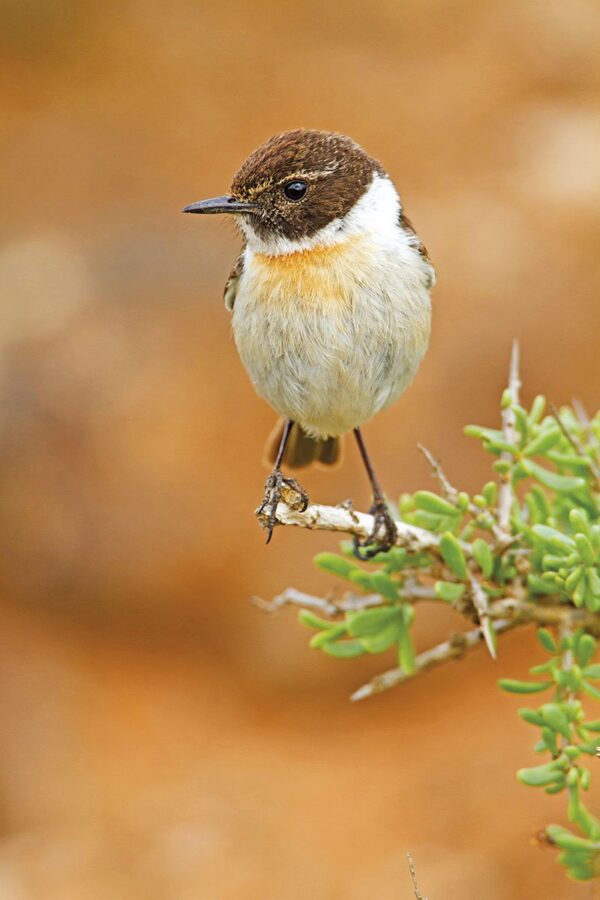NETWORK OF FOOTPATHS OF FUERTEVENTURA
Introduction
This network shows the visitor a unique showcase of landscapes and culture, along its approximately 255 kilometres which are divided into different sections; Great Routes (GR), Small Routes (PR) and Local Trails (SL).
While in many parts of the world outdoor activities have to be put on hold during the winter, the eternal spring that reigns in Fuerteventura allows you to practice any kind of sport and be in contact with nature all year round.
Both the signposting along the route and the publication of this topographical guide are designed to encourage leisure and sporting activities in a natural 100% environment.
Location
Situated in the east of the Canary archipelago and only 100 kilometres from the African coast, Fuerteventura is the largest island in its province and the second largest in the Canary Islands, only behind Tenerife.
Origin, formation and topography
According to various sources, Fuerteventura is the oldest island in the archipelago. It is approximately 23 million years old and has experienced numerous volcanic eruptions throughout its geological history. For this reason it is characterised by the variety of its forms and materials. Some of these materials appeared in the early stages of the formation of the island and we will have the opportunity to observe them in the Betancuria Massif. The current relief is in an advanced state of maturity. The intense erosive processes have dismantled and strongly eroded the land of Fuerteventura, turning it into an island with extensive plains and very little ruggedness. Its highest peak is Pico de la Zarza, at 807 metres.
The island was formerly called Planaria, among other names, which shows that it is an island characterised by its extensive plains.
Climate
Fuerteventura is identified by its intense aridity, which is due both to its geographical location and its low-relief surface.
Its aridity is defined by the island's low altitude. The trade winds cross the land leaving very limited amounts of rain. Only Jandía and Betancuria are different from the rest of the island, as they have more cloud accumulation due to their location at the highest points of the island.
Fuerteventura's aridity has its origin in a frequent phenomenon that also occurs on the other islands but is more prevalent in the eastern islands: calima. Being so close to the African coast, the dust generated by sandstorms from the Sahara reaches the island dragged by the sirocco.
All these factors together create a wonderful climate that hardly changes throughout the year and with an average temperature of 21°C.

Vegetation and fauna
The island's limited and irregular rainfall, high sunshine and high temperatures determine the island's plant and animal life.
Vegetation
Fuerteventura has rather poor vegetation; there are no forests. This is mainly due to the lack of rainfall and the intense grazing to which the island was subjected for centuries. Although plants are not abundant, Fuerteventura is home to many endemic species, some of which have disappeared from most of the world.
Typical of Fuerteventura are the Canary Island palm groves (Phoenix canariensis) and the tarajales (Tamarix canariensis). In the higher areas of the island, we can find isolated examples of thermophile forests, wild olive trees (Olea cerasiformis) and nursery (Pistacia atlantica).
In sandy areas close to the coast, the most representative are sea holly (Zygophyllum fontanesii), the balconies (Traganum moquinii) and the milkvetch (Euphorbia paralias). In the interior, you can mostly see what is commonly called on the island the "little heart" (Lotus lancerottensis) and the plant called "white salt" by the locals (Polycarpaea nivea), among others.
Fuerteventura has good salt marshes, areas regularly flooded by the tide that have become an important place for birds. In this habitat, together with other species, there is a dense scrubland made up mainly of species belonging to the Suaeda and Salsola genera, known in Spanish as "salados".
In the higher areas of Jandía you can find endemic species such as the jorjao (Asteriscus sericeus), the Jandía daisy (Argyranthemum winterii) and the (Echium handiense), a small-medium shrub known as "tajinaste de Jandía".
It is also important to highlight the presence of lichens, which are widespread. They are very abundant in karstic or badlands regions, where they form crusts on the rocks.
Last but not least, there are certain species that have been introduced into Fuerteventura's environment and have adapted perfectly to its climate. These include wild tobacco (Nico-tiana glauca), prickly pears (Opuntia spp.), American aloe (Agave americana) and sisal (A. fourcroydes).
Fauna
Invertebrates are the best represented taxonomic group on the island; insects are the ones that have acquired the greatest interest.
Among the vertebrates, birds are the most representative, as they have the largest number of species. Steppe birds such as the Great Bustard or the Canarian Houbara Bustard (Chlamydotis undulata fuertaventurae) can be found on the plains of Fuerteventura. In alluvial areas and ravines, the canary stonechat (Saxicola dacotiae), a small passerine found only on Fuerteventura. The Canary Island Egyptian Vulture (Neophron percnopterus majorensis), the only vulture in the Canary Islands, finds its main refuge in the mountains of Fuerteventura.
Among seabirds, the most common are the Cory's shearwater (Calonectris diomedea) as a nesting bird and the little egret (Egretta garzeta) as a migratory bird.
Reptiles are the second most important animal group. They include the Atlantic lizard (Gallotia atlantica), the eastern Canarian gecko (Tarentola angustimentalis), with a significant number of species, and the (Chalcides simonyi), a rare species of skink, more robust than the first two but much less common.
Amphibians are represented by only two species of frogs introduced by humans: the Iberian water frog (Rana perezi) and the Mediterranean tree frog (Hyla meridionalis) that need humid areas to survive.
Finally, most of the mammals found on the island have been introduced deliberately or accidentally by humans, except Kuhl's pipistrelle (Pipistrellus kuhlii) and the Canary Island shrew (Crocidura canariensis).
Among domesticated animals, the most common are goats, sheep, dromedaries and donkeys. Non-domesticated animals are present throughout the island, including the North African hedgehog. (Atelerix algirus) and the Barbary ground squirrel (Atlantoxerus getulus) are species recently introduced from Africa.

Protected natural areas
MIDE(excursion information method)
Difficulty assessment
Basic information
Recommendations for your stay in the countryside
The MIDE is a communication system between hikers. It is a grading scale that includes the technical and physical difficulties of the routes and classifies them for better information. Its aim is to evaluate the difficulty of the excursions so that each hiker can choose the route he/she wishes to do.
The MIDE comprises two blocks of information:
1 - Rating (from 1 to 5 points, 1 being the lowest and 5 the highest) of four aspects of difficulty.
2 - Basic information on each route.
Recommendations for your stay in the countryside
Do not leave or bury rubbish.
Do not light fires, except in authorised areas.
Respect the trails and avoid shortcuts as they encourage erosion and may break the original trail marking.
Don't forget that motorised vehicles are allowed on some of the routes.
Close gates, fences, barriers, etc. that you open to prevent livestock or wild animals from entering or escaping.
Do not camp outdoors if you do not respect the designated camping areas.
Do not pick flowers or branches in your environment as you could be picking a specimen of an endangered plant species.
Do not make too much noise so as not to disturb the animals.
Plan your excursion well in advance by calculating the actual time.
Always carry enough water and a supply of ready-to-eat food if you are going on a long hike.
Don't forget simple things like a hat, sunglasses and sunscreen.
Carry a mobile phone and remember that the general emergency number is 112.




